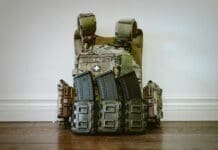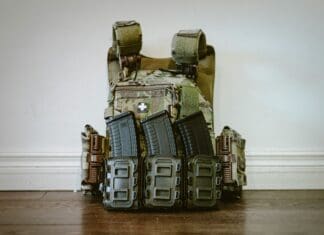This post is also available in:
 עברית (Hebrew)
עברית (Hebrew)
The US Army plans to arm close-combat units with Next Generation Squad Weapons. Believing the 5.56-millimeter caliber is slowly growing obsolete, the Army wants to field a new 6.8 mm bullet designed to penetrate body armor at greater ranges.
The new round is part of an overall shift towards big power warfare, where combat against adversaries such as the Chinese or Russian armies could lead to soldiers squaring off with enemies fielding the latest body armor.
The new 6.8 millimeter round that will start deployment in 2023 will become the new Next Generation Squad Weapons, the upcoming replacements for the M4A1 carbine and M249 squad automatic weapon.
According to Military.com the new, larger diameter cartridge could pack more gunpowder in the casing, creating greater chamber pressures in pounds per square inch to drive a bullet downrange. This in turn means a higher velocity bullet and a greater ability to penetrate steel, ceramic, and other armors.
The choice for 6.8mm emerged out of a 2017 research report – the Small Arms Ammunition Configuration Study – which convinced Army leaders that infantrymen need a round that would penetrate enemy body armor much more effectively than the current M855A1 EPR round.
The 6.8-millimeter bullet is reportedly very similar to the M855A1, consisting of a “consisting of an exposed steel penetrator that sits on top of a copper slug and is partially encased in a copper jacket.” The bullet is designed for speed and armor penetration, meaning features such as a hollow point for wound channel expansion, explosive tips, or any exotic gimmick is out of the question, as reported by popularmechanics.com.
Exactly how that bullet is integrated into the gun differs among three companies – General Dynamics/True Velocity, Textron, and Sig Sauer – competing for the Next Generation Squad Weapons contract.
The Army is demanding that each new 6.8 round weigh 30 percent less than a traditional brass cased round. The General Dynamics/True Velocity system replaces the brass shell casing with a lighter composite. Textron uses a so-called cased telescoped round, in which the bullet is encased in a lightweight plastic casing. Sig Sauer is going with a hybrid brass and steel casing.
So far, neither Army officials or the gunmakers involved in the effort will talk about the muzzle velocity of the 6.8mm round, or the extended range it’s designed to achieve to be lethal against a modern, peer adversary.
The long-standing effort to develop this revolutionary round has required gunmakers to challenge design assumptions and innovate. Now that plans to develop and field the bullet are taking shape, it remains to be seen whether it will live up to its promise to transform the fight for infantrymen.

























